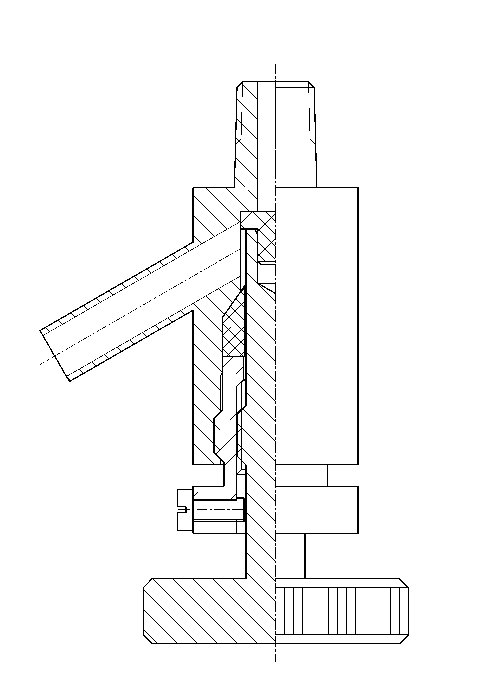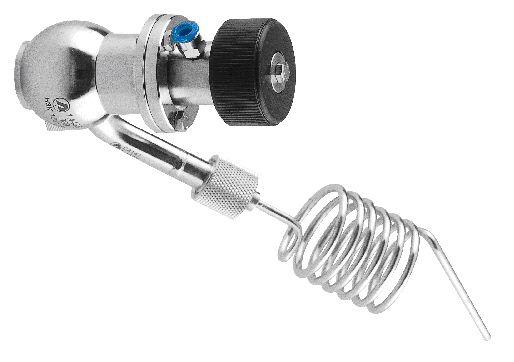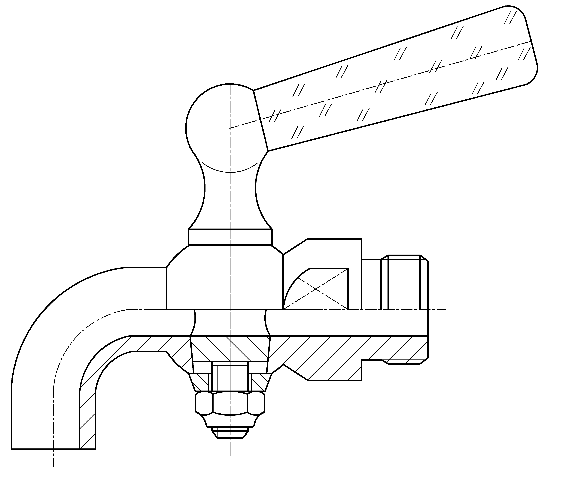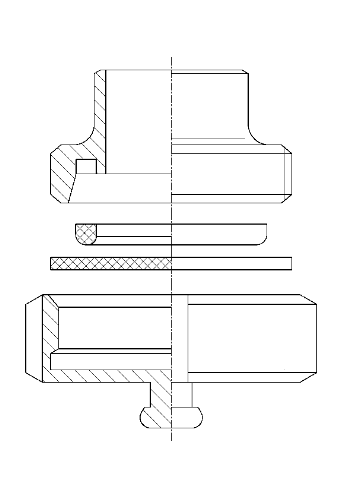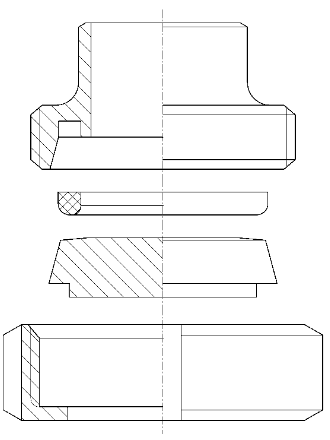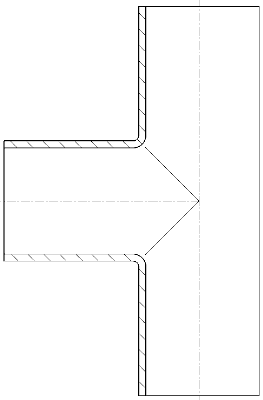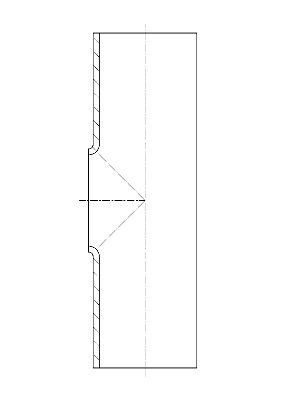Raimund Kalinowski
Unternehmensberatung
und Sachverständigenbüro
[This is a service of www.sachverstand-gutachten.de please obey the copyright]
Is hygiene just a more sophisticated word for cleanliness? It seems to be, that most people use the word hygiene just to show their intellectual demands. They even talk about hygienic paper instead of toilet paper. So is hygiene really only another word for cleanliness? Hygiene actually means everything that has a positive influence of the wellness and healthiness of humans. This means, that even a conversation could be hygienic. But it is not commonly used in such a wide range, because something like a conversation is very hard to get measured and scientifically specified. But there is a medicine branch that occupies the discipline of hygiene. Hygiene as a medical discipline works in the areas of hospital hygiene as well as environment hygiene. The environment hygiene is something we have to deal with on a day to day basis in every dairy in the world. It is not only air pollution or the handling of the waste material. Environment hygiene for a dairy is for sure also much more than garbage separation for recycling purposes. The environment
hygiene is divided into the areas Waste material handling e.g. is part of the “soil”, rays are part of the “air”. So everything
that is measurable and has an influence of the wellness or health
of humans belongs to the hygiene. In a dairy this can be split
into two major groups. The first part appears much more obviously, because here we are talking also about cleanliness as well as cleanability and sanitary design. As simple as it sounds, but also a clean straight label in clear colors and not a wrinkle misprint puts the trust of the customers into the product, so he might feel less comfortable if he has doubts about the product quality, which means that it is less hygienic. The EHEDG is doing a great job in defining standards of hygienic design. But something can also be hygienic without being certified by the EHEDG. And a lot of things that are commonly used in the plants are very far away from being hygienic. Lighting, air conditioning, floor covering as well as noise, vibrations or colors that are used, are part of the hygiene in a dairy. As strange as it might sound, but if somebody is working all day in a bright yellow room his mood might be different from the one who was working in a room that is painted in a dark blue color. A different mood means also how alert, how motivated or how stressed somebody might be. A high quality floor with heavy duty ceramic tiles that is easy to kept clean helps a little bit the employees to feel well. Straight epoxy floors are extremely slippery when wet, therefore normally some sand is mixed in. After some time of use the top layer of the epoxy is worn and the sand is washed out. Even when it is freshly cleaned with a high pressure washer, this floor always looks dirty, because of the shadows in the pin holes. So everybody who is looking to either floor might have more positive feelings to the one that looks cleaner. The light temperature has a very big influence to the efficiency. If the light temperature is close to daylight, people feel much better, than for example if they have to work at a low light temperature, this so called “warmer light” makes people feeling tired much sooner. The most modern lights will change the light temperature during the day fully automatically, these lights actually follow the light temperature of the real sun light during the day, so at noon they produce a higher light temperature than in the late afternoon. These lights are still really expensive, even they are on the market for some seven years they are extremely seldom to find in working areas. Everybody will understand, that there are comfortable temperatures and humidity levels, and that it does not have to mean, that an operator will fall asleep just because he feels comfortable, but that it is far less risky that he will make mistakes during operation when he is not sweating or shivering. Noise and vibrations are very well defined in the health and safety act. But far below the allowed figures noise and vibrations will have a negative influence to the operators performance. It should not be a luxury anymore to install silent computers and well insulated control rooms. It is scientifically proofed that the high frequency level of some high speed hard disks can reduce the concentration level of the operators. It really is not a cost factor to install much more silent hard disk drives, you just have to think about it and you have to do it. If it is not specified the purchase department has to go for the lowest price, even the price difference between one that gets on the operators nerves to the silent one is less than an one hour payment of the operator. Vibrations will have a very high influence of the workman performance. Good engineering companies know how to reduce vibrations without driving the costs up. If we look to the first production step, the milk intake, it is clear, that the truck has to be tidy to show to everybody that human food is handled. But quite often the milk intake is not covered by a roof, so the operator as well as the connections of the transfer hose might be outside in the rain. If there is not a proper room for the driver, he will be sitting in his truck and unless a noisy bell will alarm him, he will not leave it until he considers that a manual operation is required. When it is cold outside he might even let the engine run and would not care about the exhaust fumes. To connect a tank truck a hose is necessary. Quite often hoses are also used because it makes you very flexible. Even new installations very often have hose connections in mind when installing swing bend or seat valve installations. Not only that this “unlimited flexibility” is costly but also it makes everything more complicated. There are sometimes lines installed they are used just to CIP them, because nobody even remembers the reason why they have been installed for. If hoses are still in use, it should be considered, that even food grade hoses do not have to be fabricated completely out of food grade material. Reinforcements are sometimes glued together with a glue that can have a chemical reaction e.g. with some sanitizers. There has been a large case in Germany were a plant was filling the hoses over the weekend with a halogen acid as a sanitizer in a concentration according to the suppliers recommendations. The hoses had been some four years in operation and looked from outside like they would be in a good shape. The hose connections had been installed by the plant with a band-it tool. On some parts the inner liner was damaged and the halogen acid could penetrate the reinforcement. When the hoses were rinsed out, the rinse water did not have any off flavor, even the product pumped through, tasted and smelled fine until one or two days after filling. Then the product was building up a kind of a phenol flavor. This killed the business of the plant and they got shut down soon later. Hoses should get inspected at the inside on a regular bases. The hose connections should be installed by the hose manufacturer. Only the best (and normally most expensive) hoses are good enough. The life cycle of a hose is approximately three to four years. So hose lines are the most expensive and most risky lines and should only be used for tank truck connections or for “real emergencies”. Sample
valves are often installed at a poor accessibility. The quality
of a sample relies also on the easiness of the sample taking.
fig. 1 Better sample valves in addition can get operated pneumatically for CIP (fig. 2), an automatic CIP with only manual operated sampling valves is not possible!
fig. 2 The cost factor is minor if it is considered, how many sample valves are installed in total and how high of a risk is taken to rely that the operators will open all sample valves manually at every CIP that is performed. Sample cocks (fig. 3) should not even be used for non product materials, they are not cip-able and if they are not maintained properly they will leak soon.
fig. 3 The losses of compressed air or water because of leaking sample cocks are much more costly than the price of a good sample valve. Unfortunately because of cost reasons especially engineering companies order more sample cocks than proper sample valves, so the valve manufacturer produces what the market asks for. So the final customer has to specify these details unless he is working together with companies who always obey such rules. Swing bend panels or pipe fences are used in most dairies. Not only in Germany, but also in Europe, Asia and Africa DIN 11 851 unions are used. It is common practice to close the open branch with a blind cap during CIP and leave the butterfly valve open to flush out this part. Blind caps do not use the DIN gasket but a sealing disk or a flat sealing ring. If this sealing disk is damaged product or CIP solution can get trapped behind this gasket as well it will stay behind a flat sealing ring. These areas are un-cleanable (fig.4).
fig. 4 It is much more sanitary to use a heavy liner plug (fig.5) only with the normal DIN 11851 gasket.
fig. 5 Any Tee independently if installed in a pipe fence or somewhere else in the plant that branch is followed by a butterfly valve should be built as a short Tee (fig. 7).
fig.7 The standard Tee (fig. 6) is very hard to get cleaned together with the main line.
fig. 6 Production rooms can be built using up every space, so it is hardly possible to operate and maintain the plant. An ergonomic, clearly arranged design helps to prevent operating errors. If a plant seems to be simple out of the view of the operator, he will enjoy working with it and the quality of the work and the product might increase. Complicated designs with lots of “secrets” will never get accepted by the operators and normally show that the engineer who designed this plant did not understand the process completely. For sure this is only a very small section of the hygiene in a dairy, but some people might have got arguments for something they already have known: The quality of a product has also something to do with the smile in the face of the employees. Summary: zurück zur Themenübersicht branchenübergreifend
|
